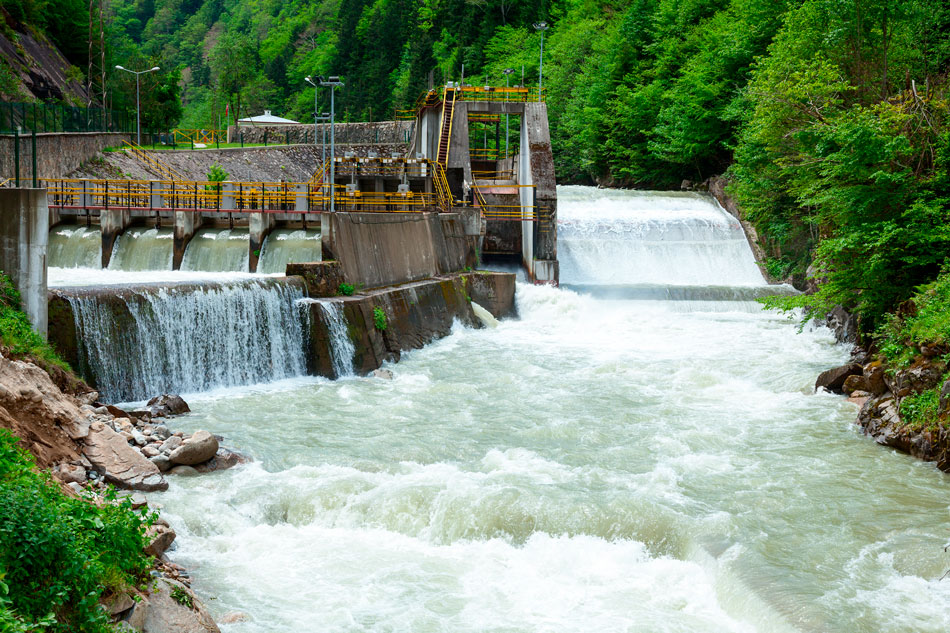- With hydroelectricity, electricity is produced through turbines, taking advantage of impending heights.
- Hydroelectric plants work by exploiting the kinetic energy of water. Gravity makes water to flow from higher to lower points, like a river from the mountains to the sea. Electricity is produced when water passes through a turbine-driven generator.
- Today there are two types of hydroelectric power plants: reservoir and run-of-river. For reservoirs an artificial lake is created, and water flows according to the needs and availability of the resource. Run-of-river hydropower plants are built near or inside rivers and generate energy through the constant passage of water. In rural or industrial areas, there are also the so-called “mini-run-of-river” plants, which have a capacity of less than 20 MW, and do not take up much space and generate energy for self-consumption.
Run-of-river hydropower
- Chile’s geography, particularly in the central to the southern area, is ideal for hydroelectric power generation. Water from the Andes Mountain Range flows steadily and abundantly into the sea. There are currently several hydroelectric plants that have contributed for many years to delivering clean energy to the country.
- In recent years, efforts to build environmentally low impact mini-hydro plants (<20 MW) have been in place. These can be installed in different watercourses, such as irrigation channels, rivers, and streams. Although they cannot replace traditional hydroelectric plants, they are considered attractive solutions for energy production in rural areas or self-consumption.
- Today, there are 544 MW mini-hydro and 6,233 MW (3,434 MW from reservoirs, 2,799 MW from run-of-river) traditional hydro facilities installed in the Chilean electricity network. In 2019, traditional hydroelectric plants contributed to a total of 19,669 GWh (23.3%) to the power generation, while mini-hydro plants generated 2,238 GWh (2.7%). Notably, gross hydroelectric production has dropped notoriously in the last 15 years, due to droughts caused with climate change.
